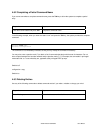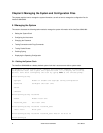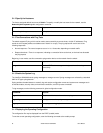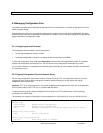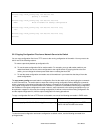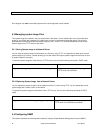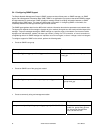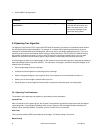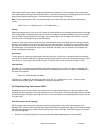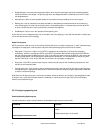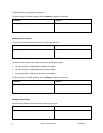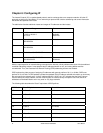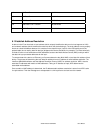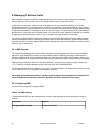Each bridge should receive regular configuration BPDUs from the direction of the root bridge. If the maximum age
timer expires before the bridge receives another BPDU, it assumes that a change in the topology has occurred, and it
begins recalculating the spanning tree. The default setting for Maximum Age is 20 seconds.
Note: The above parameters (Hello Time, Maximum Age, and Forward Time) are constrained by the following
formula:
(Hello Time + 1) <= Maximum Age <= 2 x (Forward Delay – 1)
Priority
Setting the bridge priority to a low value will increase the likelihood that the current bridge will become the root bridge.
If the current bridge is located physically near the center of the network, decrease the Bridge Priority from its default
value of 32768 to make it become the root bridge. If the current bridge is near the edge of the network, it is best to
leave the value of the Bridge Priority at its default setting.
In general, reducing the values of these timers will make the spanning tree react faster when the topology changes,
but may cause temporary loops as the tree stabilizes in its new configuration. Increasing the values of these timers
will make the tree react more slowly to changes in topology, but will make an unintended reconfiguration less likely.
All of the bridges on the network will use the values set by the root bridge. It is only necessary to reconfigure that
bridge if changing the parameters.
Port Priority
The port priority is a spanning tree parameter that ranks each port, so that if two or more ports have the same path
cost, the STP selects the path with the highest priority (the lowest numerical value). By changing the priority of a port,
it can be more, or less, likely to become the root port. The default value is 128, and the value range is 0–255.
Port Path Cost
Port path cost is the spanning tree parameter that assigns a cost factor to each port. The lower the assigned port
path cost is, the more likely that port will be accessed. The default port path cost for a 10 Mbps or 100 Mbps port is
the result of the equation:
Path cost = 1000/LAN speed (in Mbps)
Therefore, for 10 Mbps ports, the default port path cost is 100. For 100 Mbps ports, it is 10. To allow for faster
networks, the port path cost for a 1000 Mbps port is set by the standard at 4.
5.5.2 Rapid Spanning Tree Protocol (RSTP)
Rapid Spanning Tree Protocol makes use of point-to-point link type and expedites into a rapid convergence of the
spanning tree. Re-configuration of the spanning tree can occur in less than 1 second (as opposed to 50 seconds with
the default settings in the legacy spanning tree), which is critical for networks carrying delay-sensitive traffic, such as
voice and video.
Port Roles and the Active Topology
RSTP provides rapid convergence of the spanning tree by assigning port roles and by determining the active
topology. RSTP uses the same underlying spanning tree calculation and algorithm as legacy STP to select the bridge
with the highest bridge priority (lowest numerical priority value) as the root bridge. Then RSTP assigns one of these
port roles to bridge ports:
• Root port—provides the best path (lowest cost) when the bridge forwards packets to the root switch.
41 Asante IntraCore IC39240/480 User’s Manual



